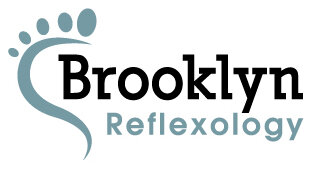Myofascial Release
Myofascial release is a form of bodywork that helps to relieve soft tissue restrictions by engaging the layers of fascia within the body. The work usually involves slow, broad, deep strokes, with the use of little to no oil. The purpose of this is to create a certain amount of “drag” and resistance within the tissue, which can then be used to slowly release trigger points and other fascial adhesions. Some people find myofascial release very relaxing and highly effective. But in order to understand why, there are a few things we need to know about fascia.
The term “myofascial,” was first used by Dr. Janet Travell in the 1940’s in her work with trigger points. If we break down the word, myo means muscle and fasciameans elastic band. In actuality, fascia is a thin layer of connective tissue that covers all the organs and muscles in the body. Think of it as a continuous web of tissue that connects all your muscles, organs, bones, blood vessels and nerves together. There are three layers of fascia within the body. The first layer is called “superficial fascia.” This topmost layer lies directly below the skin and subcutaneous tissue. The second layer, known as “deep fascia,” surrounds and is interwoven into the muscles, bones, blood vessels and nerves. The third and final layer is called “deepest fascia.” This layer is found within the dura of the cranium. If we stop to consider the fact that all three layers are connected to one another, then it’s easier to see how a myofascial stretch applied in one area of the body (i.e. the foot) has the potential to affect a very different area of the body (i.e the head). In reality, releasing fascial adhesions in one area will affect tension within the whole fascial system.
Fascia is made up of collagen fibers suspended in a ground substance. Normal, healthy tissue will have a certain amount of extensibility and elasticity due to something known as “critical interfiber distance.” Collagen fibers must maintain a certain distance from one another or they begin to stick together and eventually form fascial adhesions. The ground substance, which holds these collagen fibers apart, does this by retaining water. Therefore the more hydrated it is, the better it is at maintaining this distance.
Another element of fascia, and the one that makes myofascial release effective, is something known as thixotropy. Thixotropy is a property of fluids and gels that allows them to become less viscous (less stiff) and more fluid when stress is applied. In the context of a massage, the depth and direction of the stroke is the stress which melts the fascial adhesion and makes the surrounding fascia more fluid. There are many factors which can affect the thixotropic nature of fascia. Injury, stress, and inactivity are just a few of the most common. Damage to the ground substance can lead to fluid depletion and a build up of metabolic waste, which can eventually lead to soft tissue restrictions.
Another important aspect of fascia is that, within this continuous system of connective tissue, are meridians or “trains” of fascia than run in very specific directions. In his book “Anatomy Trains,” Thomas Myers describes several meridians that run at various lengths throughout body, stopping at boney landmarks along the way. Myers lists 11 distinct meridians that criss-cross the body from different angles. But for the sake of this article, we’ll take a look at two.
The image below is depicts the “superficial back line” or SBL. The “tracks” run from the plantar surface of the feet, up the back of the legs, into the glutes, along the spinal muscles, and around the top of the head to your forehead. The “stations” are the boney prominences the fascia runs over. In this case it’s the heel bone, sitzs bones, sacrum, skull, and brow ridge.
This second image shows the “superficial front line” or SFL. See how it runs from the tops of the feet to the backs of the ears.
These meridians clearly illustrate how a muscle strain or adhesion in one area of the body can create tension all along that fascial line. Myofascial release endeavors to meet that restriction and stretch it past its barrier to create a release. It’s normal for certain areas to be more tender or sore than others depending on how bound the tissue is. This can also be a sign of a trigger point, which can at times relay it pain signals along this fascial network. Freeing up trigger points and adhesions along these meridians can have a dramatic affect on the whole “train.”
One final note on this fascial network should help to underscore the continuity of the body as a whole. From a classical anatomy perspective, muscles and bones are given separate names and functions. Bones act as the struts and levers, and the muscles, tendons and ligaments as pulleys and stabilizers. However, due to the presence of this fascial network, the body act more like a “tensegrity” structure than anything else. The word tensegrity is a combination of the words “tension” and “integrity.” It describes a structural unit whereby its integrity is created by an even distribution of tensional forces throughout the system. So your skeletal bones are no longer viewed as the framework your whole body rests upon, but rather, as “spacers” “floating” within the body. This radical perspective is more in line with how the body truly acts than the conventional machine-like paradigm we’ve grown accustomed to. So this means that tension (whether traumatic or therapeutic) applied to an area of the body will be absorbed and distributed throughout the whole body. It kind of makes you wonder what’s really causing that headache or pain in your foot…
